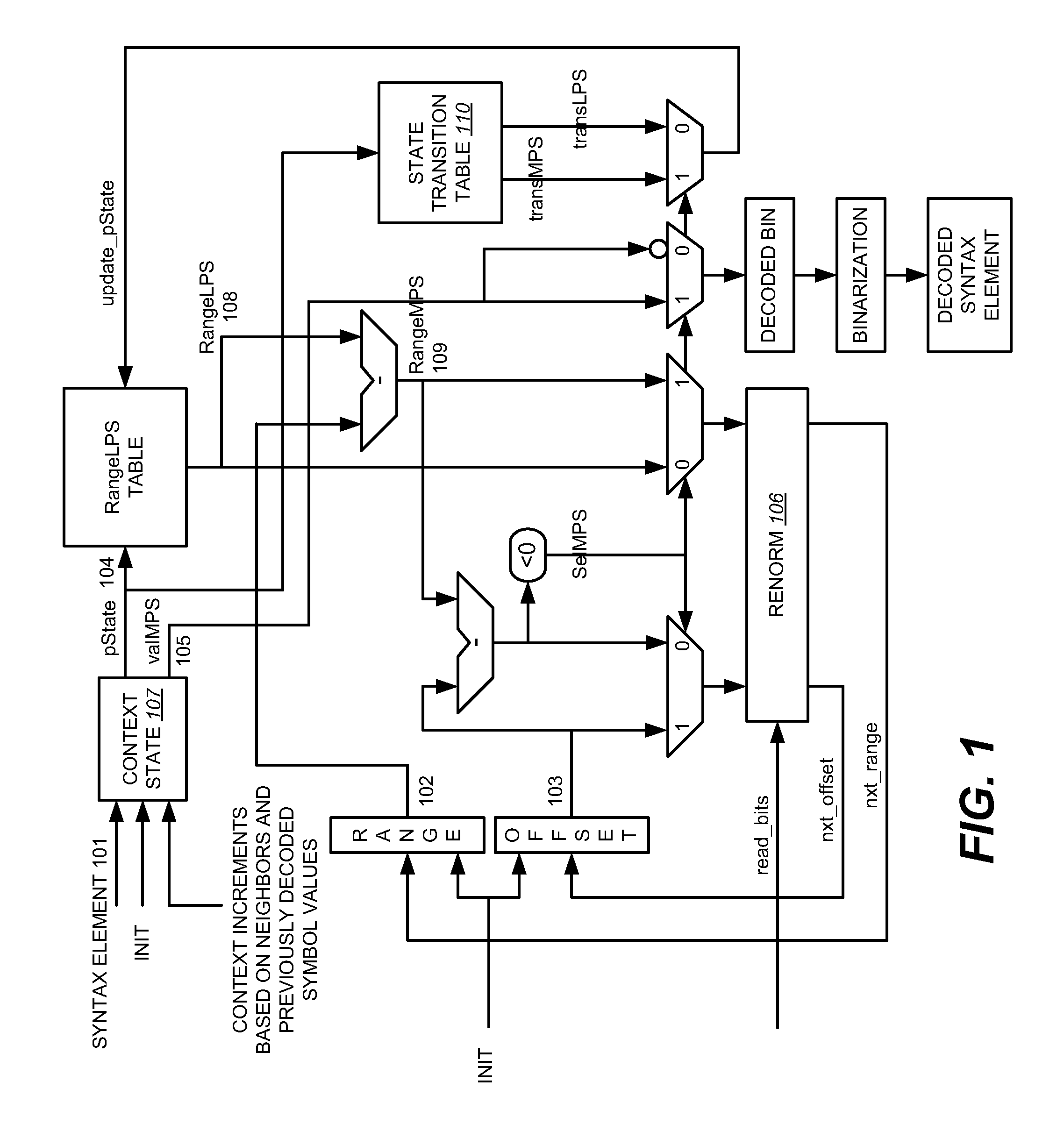2-bin parallel decoder for advanced video processing
a video processing and decoding technology, applied in the field of advanced video processing, can solve the problems of particular challenges in parallel or pipelined implementation of this algorithm, and achieve the effect of reducing transmission rates
- Summary
- Abstract
- Description
- Claims
- Application Information
AI Technical Summary
Benefits of technology
Problems solved by technology
Method used
Image
Examples
Embodiment Construction
[0021]In the area of entropy coding in video processing, the CABAC has several beneficial characteristics. These include the usage of adaptive probability models for most symbols, exploiting symbol correlations by using contents, simple and fast adaptation mechanism and fast binary arithmetic codec based on table look-ups and shifts only. The average bit-rate saving over CABAC over CAVLC is around 10 to 15 percent and is adopted by H.264 as standard.
[0022]The decoder decision algorithm for CABAC is a sequential algorithm that decodes one bit at a time. For High Definition video resolution where pictures are encoded using a high bit rate, decoding one bit at a time is found to be too slow for some movie sequences. In our solution, we take advantage of the calculated probabilities of the decoded bit values and only accelerate the paths for the most probable outcomes. Since the arithmetic decoders already calculate these probabilities and maintain the probable decoded bit values, the d...
PUM
 Login to View More
Login to View More Abstract
Description
Claims
Application Information
 Login to View More
Login to View More - R&D
- Intellectual Property
- Life Sciences
- Materials
- Tech Scout
- Unparalleled Data Quality
- Higher Quality Content
- 60% Fewer Hallucinations
Browse by: Latest US Patents, China's latest patents, Technical Efficacy Thesaurus, Application Domain, Technology Topic, Popular Technical Reports.
© 2025 PatSnap. All rights reserved.Legal|Privacy policy|Modern Slavery Act Transparency Statement|Sitemap|About US| Contact US: help@patsnap.com



